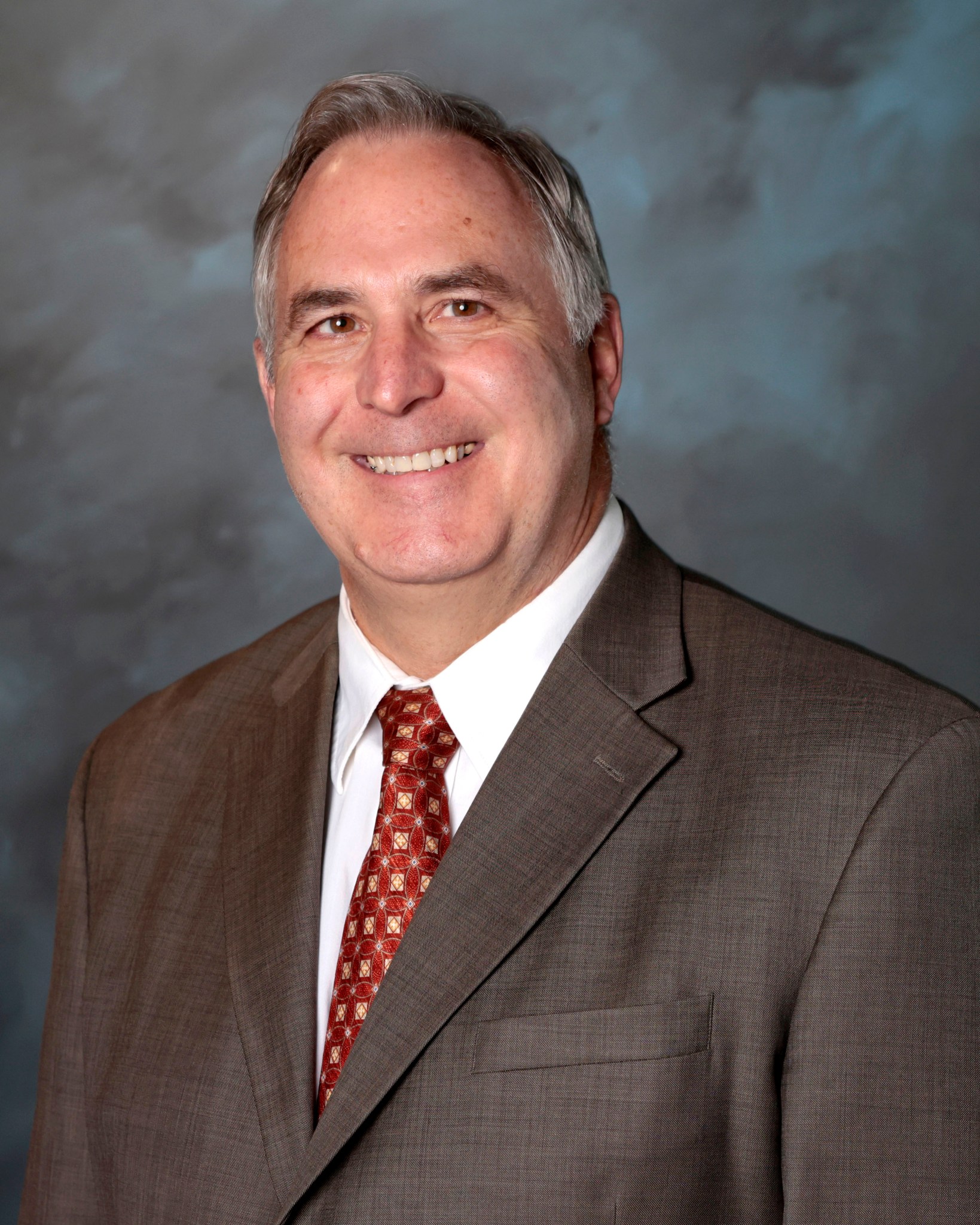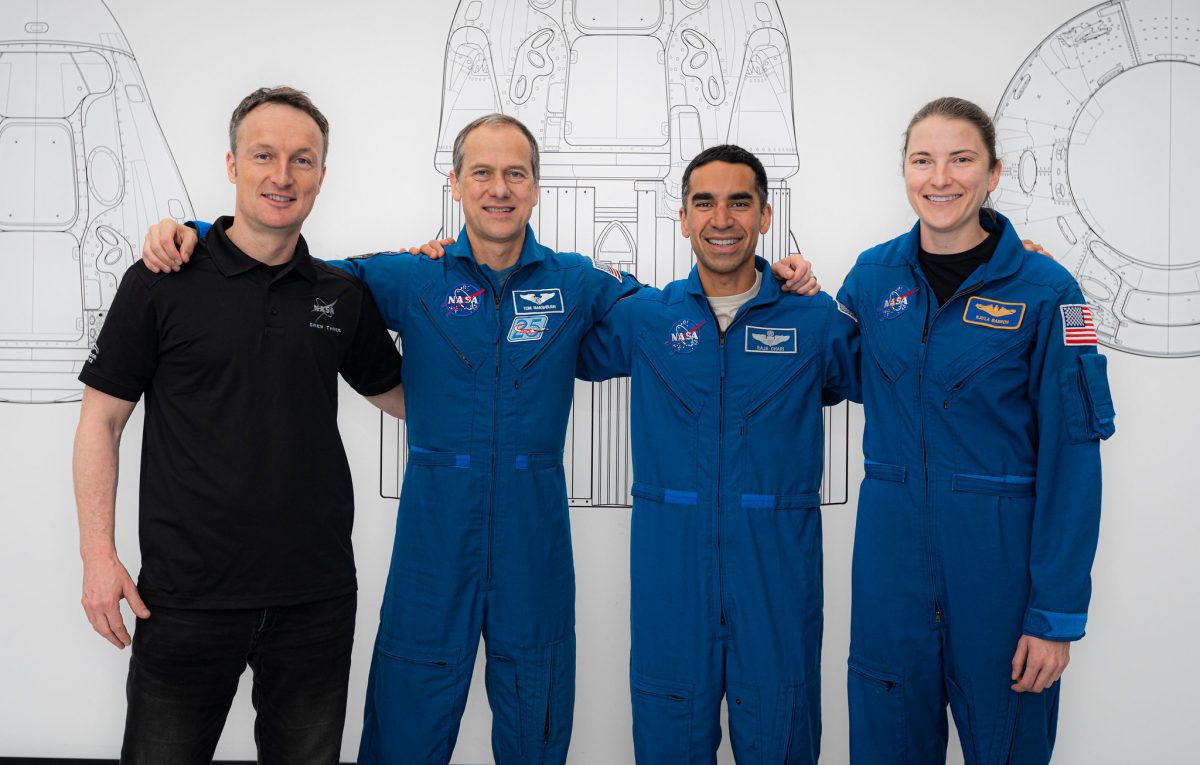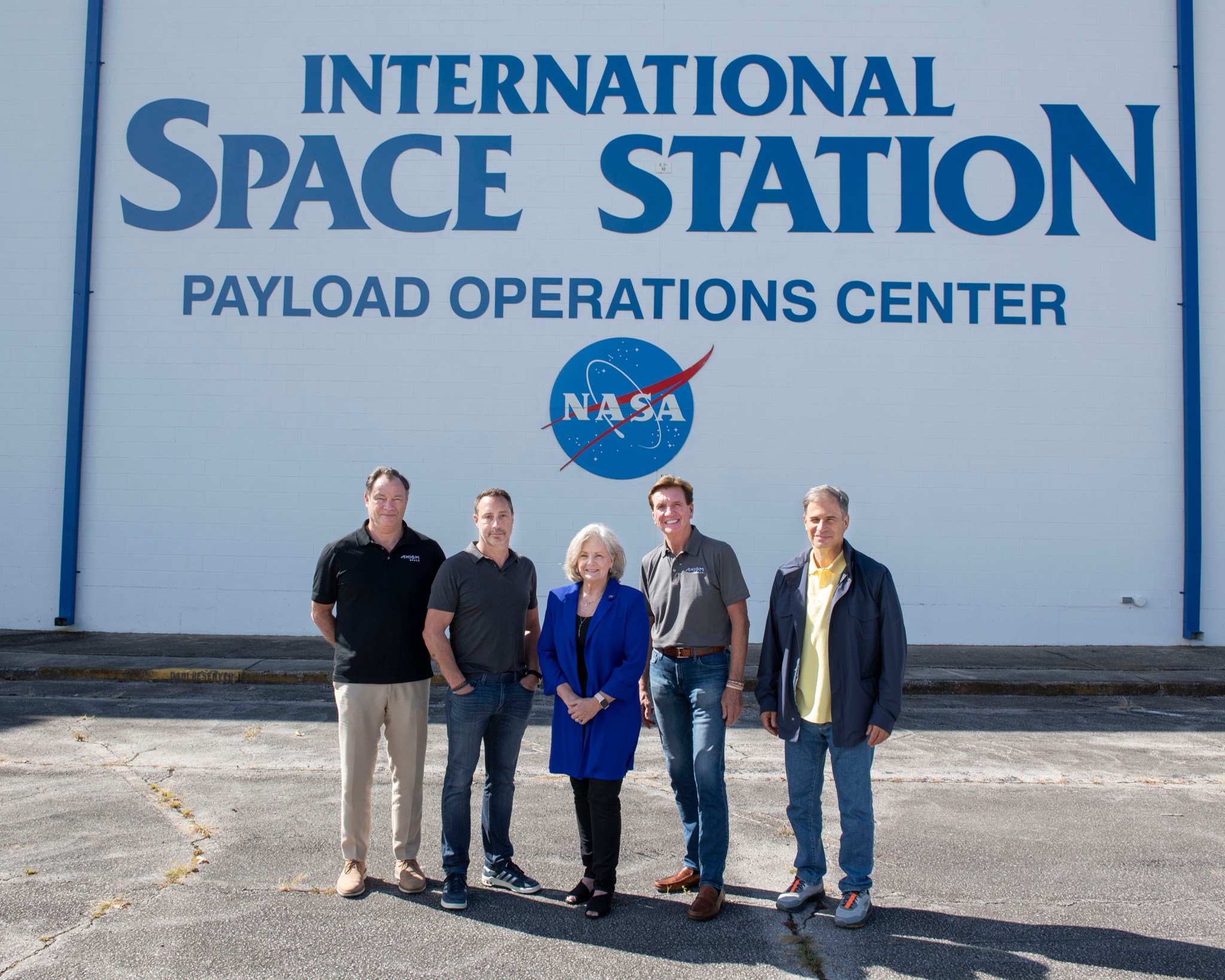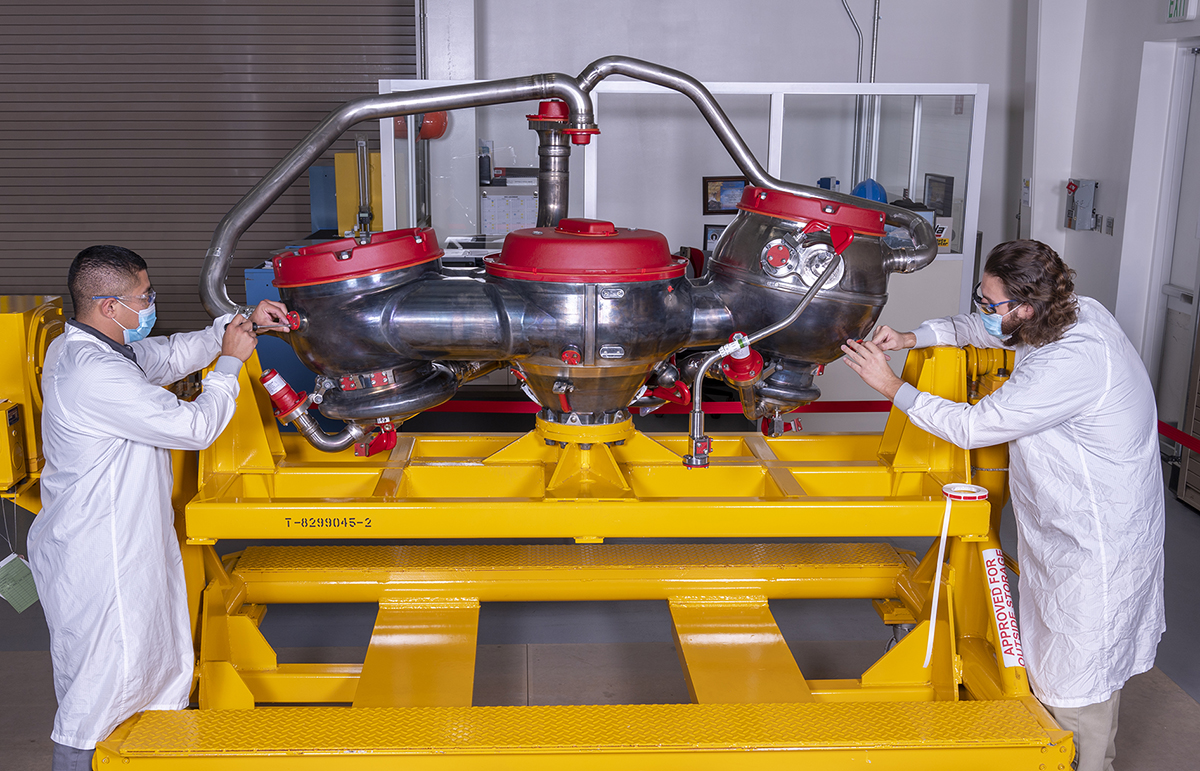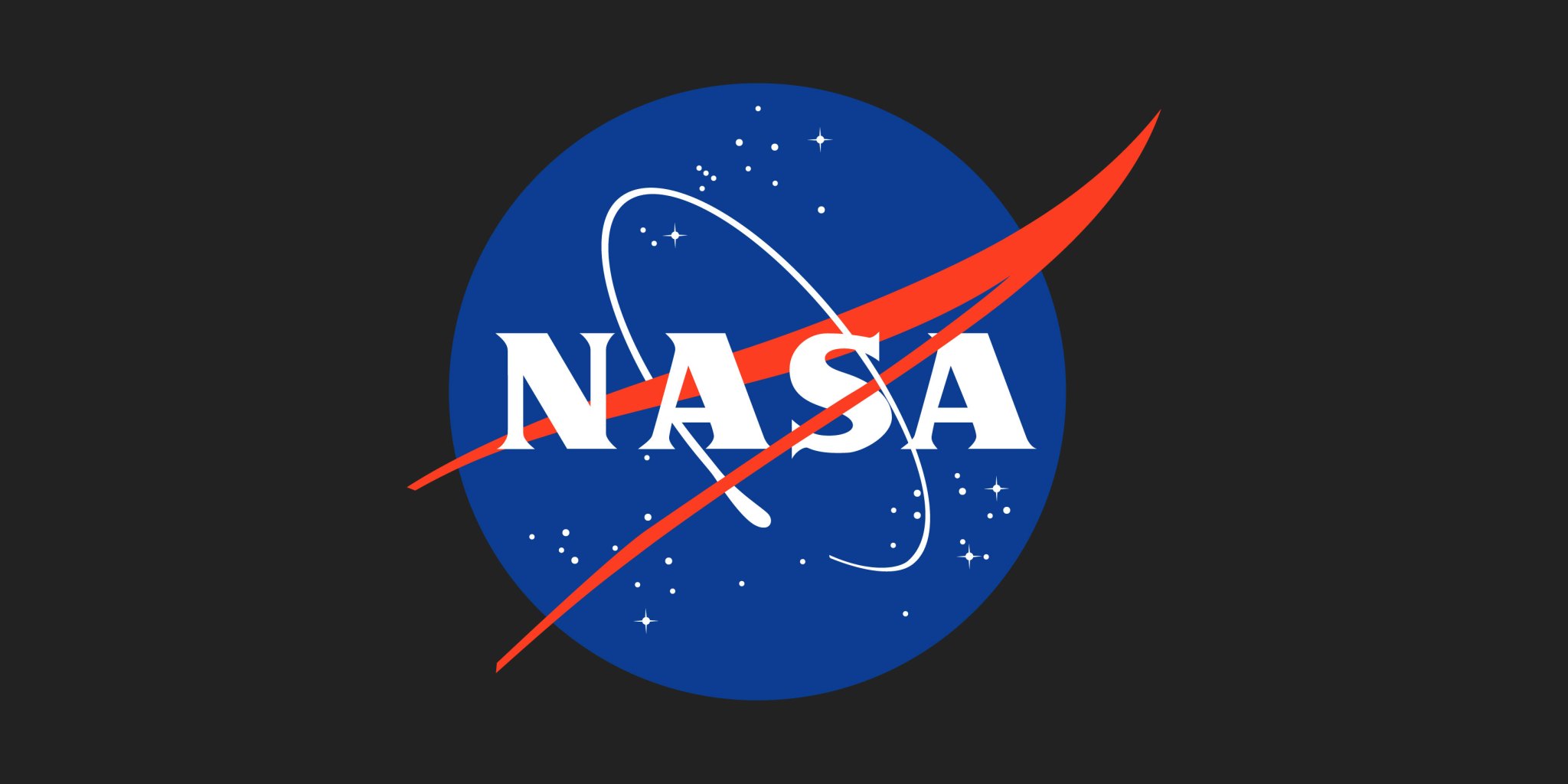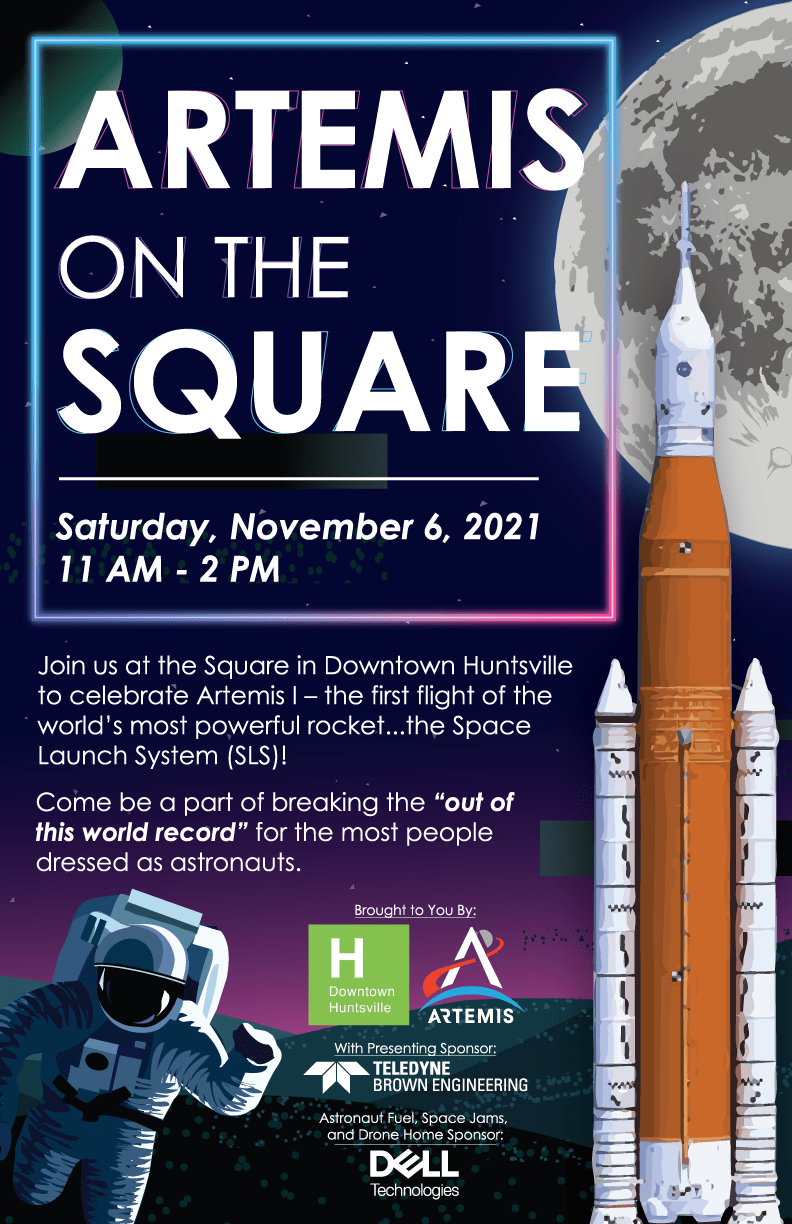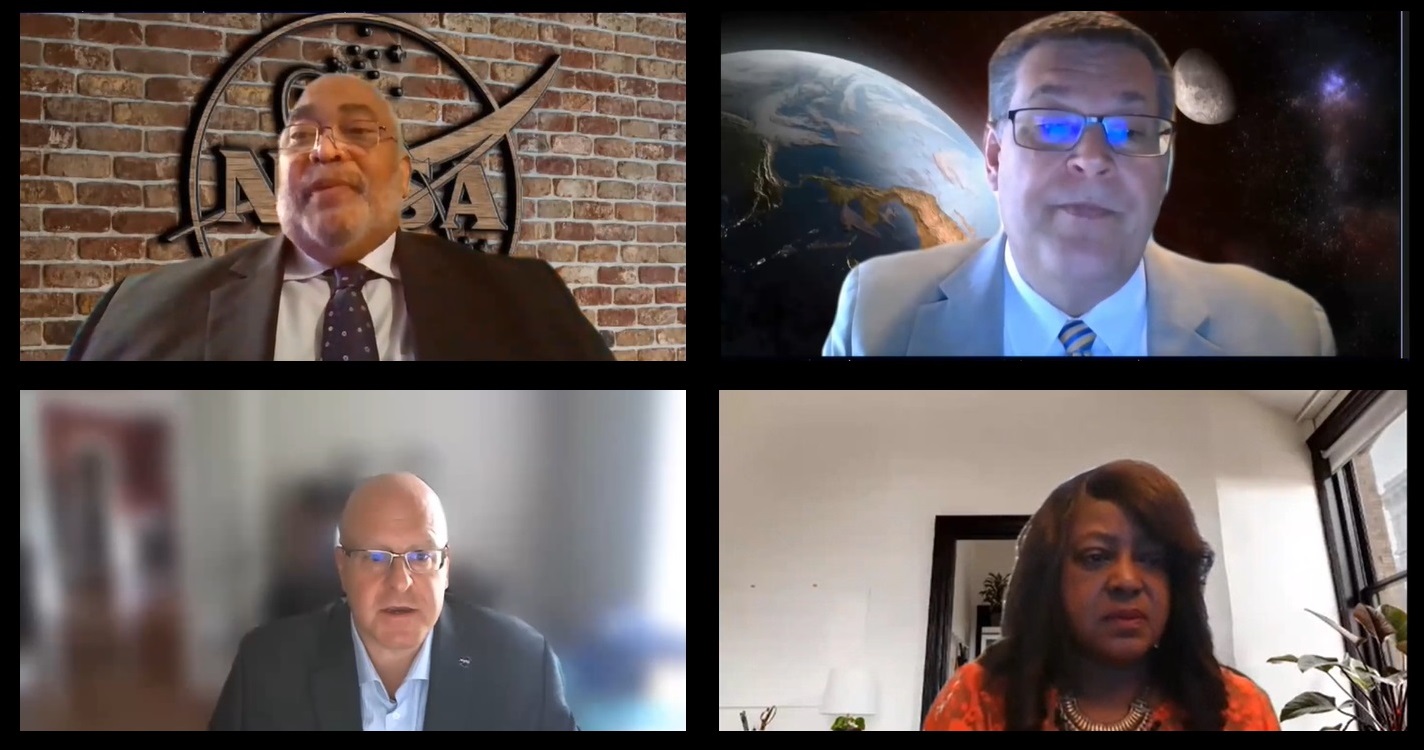Lonnie Dutreix Named Michoud Director
Lonnie Dutreix has been appointed to the Senior Executive Service position of director of NASA’s Michoud Assembly Facility. He will oversee one of the world’s largest manufacturing facilities where key elements of NASA’s Space Launch System and Orion spacecraft are being built. Dutreix will manage an annual operating budget of $60 million, more than 2 million square feet of manufacturing space, and 829 acres of land at the multi-tenant facility. More than 3,000 federal, state, academic, and technology-based industry employees work at Michoud.
The Senior Executive Service is the personnel system that covers most of the top managerial, supervisory, and policy positions in the executive branch of the federal government.
Dutreix was Michoud’s deputy chief operating officer from October 2017 to August 2021. In this role, he managed the day-to-day operations of NASA’s largest manufacturing facility. He became acting director of Michoud in August.
Prior to his arrival at Michoud, Dutreix was assistant director of Center Operations at Stennis Space Center. He was responsible for implementing a $1.2 billion Synergy-Achieving Consolidated Operations and Maintenance contract that jointly supports Michoud and Stennis. He also developed the surveillance and performance monitoring plan in support of the contract.
Dutreix worked at Stennis for 15 years in various roles managing strategic contracts, partnerships, and facility design. Before joining NASA, he worked for Rockwell International supporting Stennis as a data systems manager as well as an instrumentation lead engineer.
Dutreix received a master’s and bachelor’s degree in electrical engineering from the University of New Orleans. He also holds several professional certificates, including Certified Project Management Professional. Dutreix lives in Slidell, Louisiana, with his wife, Sherri. They have five children.
NASA’s SpaceX Crew-3 Launch Delayed from Nov. 3
NASA is delaying the upcoming launch of the agency’s SpaceX Crew-3 mission due to a minor medical issue involving one of its crew members. The issue is not a medical emergency and not related to COVID-19. The launch to the International Space Station was planned for Nov. 3.
The agency takes every effort to protect the crew prior to its launch through a health stabilization plan. Crew-3 astronauts will remain in quarantine at NASA’s Kennedy Space Center while preparing for their launch.
Teams will continue to monitor crew health as they evaluate potential launch opportunities at the end of the week. The earliest possible opportunity for launch is 10:36 p.m. CDT Nov. 6.
The SpaceX Crew Dragon spacecraft and Falcon 9 rocket are in good shape and will remain at Launch Complex 39A at Kennedy.
The Crew-3 flight will carry NASA astronauts Raja Chari, mission commander; Tom Marshburn, pilot; and Kayla Barron, mission specialist; as well as European Space Agency astronaut Matthias Maurer, who will serve as a mission specialist, to the space station for a six-month science mission, staying aboard until late April 2022.
This is the third crew rotation mission with astronauts on the Crew Dragon and the fourth flight with astronauts, including the Demo-2 test flight, as part of the agency’s Commercial Crew Program.
NASA also will continue to evaluate dates for a return to Earth for NASA’s SpaceX Crew-2 mission with NASA astronauts Shane Kimbrough and Megan McArthur, Japan Aerospace Exploration Agency astronaut Akihiko Hoshide, and ESA astronaut Thomas Pesquet.
Mission teams are reviewing options including both direct and indirect handovers for the upcoming crew rotation at the microgravity laboratory. Teams will review all options for safely launching and returning crew members and continue the agency’s important work on the space station.
“Our team at Marshall is monitoring launch vehicle conditions and standing ready to support the upcoming launch,” said Steve Gaddis, launch vehicle deputy manager at Marshall for the Commercial Crew Program. “We successfully completed the first stage engine static fire testing on the pad Oct. 27. Data was nominal and the launch vehicle is in satisfactory condition for launch.”
The Human Exploration Development & Operations Office at NASA’s Marshall Space Flight Center supports the Commercial Crew Program with engineers that have helped review critical design and development documentation. The team also helps provide oversight to safety standards for the spacecraft and verifies data. For the launch, members of the team will be present in the Huntsville Operations Support Center at Marshall and will work closely with teams at SpaceX in Hawthorne, California, Kennedy, and Johnson Space Center to monitor launch conditions.
The team has already conducted several simulations and will continue to do so in preparation for launch. During the simulations, participants use headsets and voice loops to communicate with flight control teams at Kennedy, Johnson, and SpaceX. Marshall team members help analyze data for the simulations in real time.
For more than 20 years, humans have continuously lived and worked aboard the space station, advancing scientific knowledge, and demonstrating new technologies that enable NASA to prepare for human exploration to the Moon and Mars.
The station’s design requires humans living aboard to maintain it, operate it, and upgrade it; thus, space station operations, including commercial resupply and commercial crew, are essential to the mission. Marshall also supports the station by operating the Payload Operations Integration Center, which operates, plans, and coordinates the science experiments aboard 365 days a year, 24 hours a day.
Marshall Hosts Axiom Astronauts Ahead of NASA’s First Private Space Station Mission
Jody Singer, center, director of NASA’s Marshall Space Flight Center, joins crew members of Axiom Space’s Ax-1 mission during their visit to NASA’s Huntsville Operations Support Center – home of the International Space Station Payload Operations Center. NASA awarded a contract to Axiom Space of Houston to provide at least one habitable commercial module to be attached to the International Space Station as the agency continues to open the station for commercial use. Enabled by an agreement between NASA and Axiom, Ax-1 is scheduled to launch no earlier than Feb. 21, 2022, and will be the first private astronaut mission to the space station. From left, the Axiom astronauts include Michael López-Alegría, Ax-1 commander, vice president of Axiom Space, and former NASA astronaut; Mark Pathy, Ax-1 mission specialist; Larry Connor, Ax-1 pilot; and Eytan Stibbe, Ax-1 mission specialist. Marshall’s Human Exploration Development & Operations Office hosted a payload training event Oct. 22 at the Payload Operations Center for the astronauts, who plan to conduct a dedicated microgravity research mission. The training – previously provided only to U.S. Orbital Segment astronauts – offered the Axiom astronauts an understanding of NASA payload operations integration and crew interfaces, exposure to Marshall’s facilities and capabilities, and opportunities to build relationships with payload operations integration team members in the preflight timeframe. (NASA/Fred Deaton)
Major Artemis Engine Part Arrives at Stennis for Certification Testing
The first four Artemis missions will use NASA’s 16 upgraded RS-25 engines that previously powered space shuttle flights. For future flights on the Space Launch System, NASA and prime contractor Aerojet Rocketdyne are changing the way they build major parts for the RS-25. Engineers and technicians are fabricating some of these parts using advanced manufacturing techniques that increase reliability while reducing both the cost and time to build the engine.
The first RS-25 powerhead produced by Aerojet Rocketdyne in over a decade arrived at NASA’s Stennis Space Center on Oct. 25. It will be installed to a flight certification engine built specifically for testing newly designed parts for the latest production RS-25 engine that will power SLS flights beyond Artemis IV.
The powerhead serves as the structural backbone to the RS-25. It houses three highly complex injectors that produce the combustion to power the engine and acts as a junction for several critical parts, including both high pressure pumps and the main combustion chamber.
Key powerhead components, such as the main injector, heat exchanger, and structural forgings, come with cost and schedule benefits due to the incorporation of advanced machining and forging processes as well as a reduction in welds and part counts, making the powerhead more reliable.
Powerhead unit 7001 recently completed proof pressure testing at Aerojet Rocketdyne’s site in Los Angeles. This test required the part to be pressurized beyond normal operating levels, confirming its capability to safely operate the engine.
The new powerhead, along with other engine parts made from advanced manufacturing technologies such as the engine nozzle and main combustion chamber, will undergo hot fire testing on the same certification engine early next year. The manufacturing changes incorporated into this new powerhead configuration are an integral part of NASA’s and Aerojet Rocketdyne’s strategy to reduce RS-25 manufacturing costs by more than 30% compared to its shuttle predecessor.
Sixteen new powerhead units are currently in production as part of Aerojet Rocketdyne’s commitment to deliver NASA 24 new RS-25 engines.
SLS and NASA’s Orion spacecraft, along with the commercial human landing system and the Gateway in lunar orbit, are NASA’s backbone for deep space exploration. SLS is the only rocket that can send Orion, astronauts, and supplies to the Moon in a single mission. With Artemis, NASA will land the first woman and the first person of color on the Moon and establish sustainable exploration in preparation for missions to Mars.
New Roles, Combined Offices for Administrator Leadership Team
NASA Administrator Bill Nelson is announced new leadership roles Nov. 1, as well as the combination of two offices into the Office of Technology, Policy, and Strategy, in support of Biden-Harris Administration priorities and the focus on space strategy.
- Dr. Bhavya Lal will be the associate administrator for the office
- Melanie Saunders will be the agency’s new Chief Resilience Officer
- Casey Swails will be deputy associate administrator for Business Operations
- Tom Cremins will be associate administrator for Space Security Interests
- Douglas Terrier, the agency’s current chief technologist, will be in a new position as associate director for Vision and Strategy at NASA’s Johnson Space Center. In the interim, Lal will be acting chief technologist.
All appointments are effective immediately.
The Office of Technology, Policy, and Strategy is being established to provide data- and evidence-driven technology, policy, and strategy advice to NASA leadership. The office is a merger of the Office of Strategic Engagements and Assessments and the Office of the Chief Technologist and will support NASA leadership in developing and guiding the agency’s activities across its six mission directorates. As the lead for the organization, Lal, who recently was the acting Chief of Staff during the presidential transition and senior advisor for Budget and Finance, brings her extensive experience and background in space technology, exploration, science, and policy to the role. She will report to NASA Deputy Administrator Pam Melroy.
“At NASA, we always have our eyes on the future. This is how we lead, thinking critically and strategically about the challenges we may face – both internally and externally,” Nelson said. “As we continue to push the boundaries of exploration, OTPS and these leadership positions will ensure our cutting-edge technology, strategy, and policy shape our agency’s success. We also are increasing our analysis and guidance on geopolitical issues and risks that NASA, or the space industry, may be facing.”
Because of the ongoing COVID-19 pandemic and unprecedented scope of work that Saunders has been leading, she will move into a new dedicated role focused on the coronavirus response and implementation of requirements related to it. In addition, she’ll oversee and integrate NASA’s Future of Work program as it specifically ties to the pandemic, such as the return to more on-site work. Saunders also will be responsible for the continued development and implementation of NASA’s pilots, policies, and strategies enabling a hybrid workforce and innovation in the workplace. Saunders will report to Melroy.
Swails, who most recently was senior advisor and chief of staff to the associate administrator and the agency’s acting deputy chief of staff during the presidential transition, will lead and facilitate the integration of mission support functions across the agency, build and advance NASA’s industry partnerships, and act as the principal advisor to NASA Associate Administrator Bob Cabana. Swails will report to Cabana.
Cremins will report to the administrator and provide a broad security focus on NASA’s civil space efforts within the larger national and global environment. Cremins also will support enterprise protection and assessment efforts, representing NASA and working with federal agency partners to secure and advance our national posture.
Terrier will be responsible for leading the strategy, creation, integration, and overall execution of Johnson’s ongoing transformation initiatives revolutionizing the center’s policies, plans, and processes around workforce, facilities, and products to advance human spaceflight. Terrier also will provide executive and functional leadership to expand the center’s collaboration across the agency, industry, academia, and international community, to ensure alignment with NASA’s strategic plan and missions.
“These leadership roles are critical for both sustaining and advancing NASA’s missions,” Nelson said, “and this team will guide us on our significant work ahead as we continue to take care of our people, advance our technologies, make our skies safer, enable groundbreaking scientific discoveries, protect our home planet, and push humanity’s exploration farther into the solar system than ever before.”
2021 Federal Employee Viewpoint Survey is Underway
The 2021 NASA Federal Employee Viewpoint Survey went live Monday, and the agency wants to hear from you. Responses in 2020 provided NASA leadership with valuable information about how employees are doing during such a challenging time. Responses this year will help the agency continue to improve.
“As a NASA employee, your work leaves an enduring impact – you are the key to our success,” said Jane Datta, the agency’s chief human capital officer. “Leadership remains committed to providing a safe environment in which you can thrive, be it virtual or in person. Your opinion counts, and your honest feedback is critical to understand and improve our working conditions and the agency.”
In 2020, the Office of Personnel Management reduced the length of the survey; this year’s, while similar, is even shorter. The survey has 46 core items and some demographic questions that will help leadership understand how employees are doing and areas the agency needs to focus on for improvements. The survey measures employees’ perceptions of whether, and to what extent, conditions characterizing successful organizations are present at NASA. It provides understanding of bigger-picture needs and trends in NASA and the federal government. The survey focuses on the overall work environment and is not specifically about on-site or off-site work.
It takes approximately 15 to 20 minutes to complete the survey, which can be done during work hours. Participation is voluntary, and responses are confidential. All civil servants are eligible to participate and should have received an invitation email Nov. 1 from the survey software hosted by the NASA Shared Service Center. The survey will close Dec. 3. Employees hired after Aug. 1 and contractors will not receive the survey.
Refer to the survey’s 2021 summary of changes and view the frequently asked questions for more historical context of the survey and its role across the federal government.
Contact your human resources business partner with general questions. If you have any technical issues with the survey, contact Brad Mudgett or Ben Janis for assistance.
Artemis on the Square to Launch in Downtown Huntsville Nov. 6; Volunteers Needed
By Tee Quillin
NASA’s Marshall Space Flight Center is partnering with Downtown Huntsville Inc. to bring Artemis on the Square on Nov. 6 from 11 a.m. to 2 p.m. Visitors will be able to enjoy space exhibits, live music, and activities focusing on the Artemis story and the community’s contributions to the mission, as well as the technologies that will take humanity back to the Moon and beyond.
Displays will be located around the courthouse square at the heart of downtown and will be grouped into three categories: Artemis I (Northside Square), Moon and Gateway (Eastside Square), and Mars and Beyond (Southside Square). Attendees are encouraged to dress in their best astronaut attire as event organizers try to break the record for the most people dressed as astronauts in one location.
At noon, Marshall Director Jody Singer will be joined by NASA Space Launch System experts and city leaders to welcome the community and discuss the Artemis I mission and what it means to Huntsville.
Marshall team members are encouraged to volunteer to help monitor exhibits, engage visitors, and share stickers and are asked to arrive 30 minutes prior to the beginning of the event. If interested, please fill out the online sign-up sheet by 6 p.m. Nov. 3. For more information about volunteering, contact Chris Blair. For Artemis on the Square updates and activities, visit here.
The Artemis I uncrewed mission is scheduled to launch in February 2022. It will pave the way for a future flight test with crew before NASA establishes a regular cadence of more complex missions with astronauts on and around the Moon under Artemis.
Quillin, a Media Fusion employee, Supports Marshall’s Office of Strategic Analysis & Communications.
Marshall Hosts 7th Annual Partnerships Meeting for Minority-Serving Institutions
Speakers at the Oct. 26 kickoff event of the Historically Black Colleges and Universities and Minority-Serving Institutions Partnerships meeting, hosted by NASA’s Marshall Space Flight Center, include, clockwise from upper left, Glenn Delgado, associate administrator for NASA’s Office of Small Business Programs; Larry Leopard, Marshall’s associate director, technical; Gwenevere Jasper, Marshall’s technology transfer lead for NASA Small Business Innovation Research and Small Business Technology Transfer efforts; and Jason Detko, director of Marshall’s Office of Procurement, as well as Dr. Ruth Jones, associate manager for Marshall’s Human Exploration Development & Operations Office, who hosted the session. The two-day virtual event, now in its seventh year, is designed to highlight the critical role historically Black colleges and universities and minority-serving institutions play in the success of NASA’s missions, and the long-term national value and impact of those partnerships. Speakers provided updates on key NASA initiatives with business opportunities for minority-serving partners, including the Artemis program to send new exploration missions to the Moon, the Human Landing System program to ferry astronauts to and from the lunar surface, and long-term plans to send the first crewed missions to Mars. “As we look ahead, we’re committed to increasing diversity and inclusion efforts essential to every NASA mission,” Delgado told participating students and academic leaders from some 40 minority-serving institutions across the country. Learn more about how Marshall and NASA partner with these institutions here. (NASA)
NASCAR Engineer Richie Parker Speaks at Disability Employment Awareness Month Event
On Oct. 28, NASCAR engineer Richie Parker, a vehicle motor engineer for Hendrick Motorsports who was born without arms, virtually addressed team members at NASA’s Marshall Space Flight Center and others across the agency, wrapping up NASA’s celebration of National Disability Employment Awareness Month. “There’s not a whole lot that’s going to stand in my way,” Parker said. “It’s not about what I can’t do – it’s about what I haven’t done yet.” That attitude embodies the spirit of the national theme for this year’s observance, “America’s Recovery: Powered by Inclusion.” The Office of Diversity & Equal Opportunity at Marshall hosted Parker’s address in partnership with NASA’s Kennedy Space Center, NASA’s Stennis Space Center, and the NASA Shared Services Center. Learn more about NASA’s Disability Employment Program here, and read about the Marshall Disability Employee Resource Group here. (Richie Parker)
Juno Science Results Offer First 3D View of Jupiter’s Atmosphere, Highlighted on ‘This Week @ NASA’
The latest findings from NASA’s Juno probe orbiting Jupiter are featured in “This Week @NASA,” a weekly video program broadcast on NASA-TV and posted online.
Several scientific papers have been published highlighting new findings from NASA’s Juno mission at Jupiter that provide a fuller picture of how the planet’s colorful and distinctive atmospheric features offer clues to unseen processes deeper down below the planet’s cloud tops. Juno’s microwave radiometer allows mission scientists to see beneath the cloud tops and probe the structure of Jupiter’s numerous vortex storms for the first time, including the planet’s Great Red Spot.
Juno is part of the Science Mission Directorate’s New Frontiers Program, managed by the Planetary Missions Program Office at NASA’s Marshall Space Flight Center.
View this and previous episodes at “This Week @NASA” on NASA’s YouTube page.



























